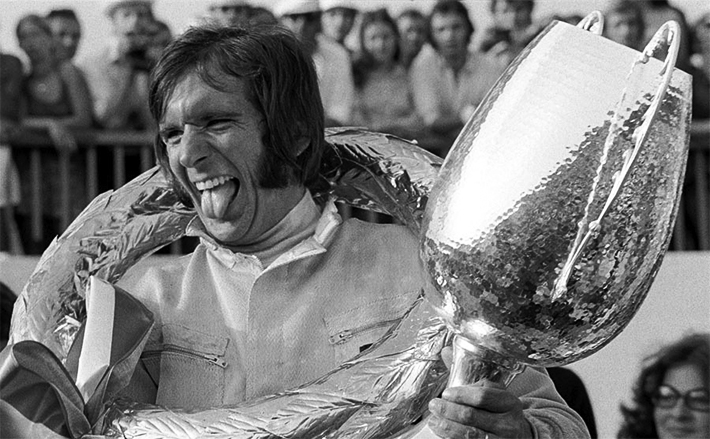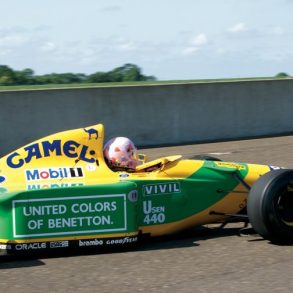Emerson Fittipaldi Biography
“Emmo” as he is known by legions of fans in America began his rise to fame in Europe. 

Fittipaldi made his debut at Brands Hatch driving an old Lotus 49 in which he scored an 8th place. His second race in Germany saw him score his first points for fourth place. Later after the tragic death of team leader Jochen Rindt, he won the United States Grand Prix clinching the World Championship for his stricken teammate. This young well-mannered driver seemly appeared out of nowhere to rescue the devastated team.
Fittipaldi’s 1971 season was interrupted by a road accident on his way home. His injuries while not life-threatening contributed to his lack of form that year but the following season saw him rise to the top, becoming the youngest World Champion in history. In 1973 he started the season as World Champion destined for another title. He seemed to have the measure of his competitors all save one, his teammate. Colin Chapman hoping to duplicate the super team of Clark and Hill added the Swede Ronnie Peterson. At first Fittipaldi seemed to take this challenge in stride when he won both the Argentine and Brazilian Grands Prix. But the strain of developing the car, only to be out-qualified by Peterson, soon told on the usually calm Brazilian. In France he made an uncharacteristic error in trying to pass South African Jody Scheckter, causing a collision that ended the race for both cars. Fittipaldi would finish the title chase in second that year and soon left for McLaren.
More than the threat of his fast teammate Fittipaldi might have surmised that Lotus was entering one of their down periods after the racing life of their superb Lotus 72 had reached its end. Three wins and numerous points scoring finishes allowed him to claim his second World Championship in 1974.
The next year was a year of turmoil which included a half-hearted Brands Hatch Race of Champions and a walkout at the Spanish Grand Prix. Disgusted with the political machinations he found in Formula 1 he turned inward. Helped by sponsorship from the Brazilian sugar combine, Copersucar he formed his own team with his elder brother Wilson Jr. but try as they might they could not reproduce the magic of a decade earlier and it was a sad sight to see the double World Champion at the blunt end of the grid. Frustrated with the lack of success Fittipaldi retired to his native Brazil heavily in debt but through his many contacts and hard work he was able to rebuild his fortune.
His career while ending in disappointment had shown a driver of great talent, whose smooth style was best described in the title of his autobiography; Flying on the Ground. All could have ended there but the racer’s heart still beat in his chest and.
In 1984 he made a remarkable comeback, not in Formula 1 but in the Indy Car series. He soon became a crowd favorite with his open love of racing and his gracious attitude to his fellow drivers, one of whom, Al Unser Jr. who would become his rival, teammate and friend something not exactly the norm in Formula 1.
His smooth style and experience would result in two Indianapolis 500 victories on that fearsome track. He finally retired for good after suffering neck injuries in a crash at the start of the US 500 in Michigan in 1996 and later back injuries in a small airplane crash.
Today he continues his involvement in motor sport on multiple levels loved by fans on two continents.





















